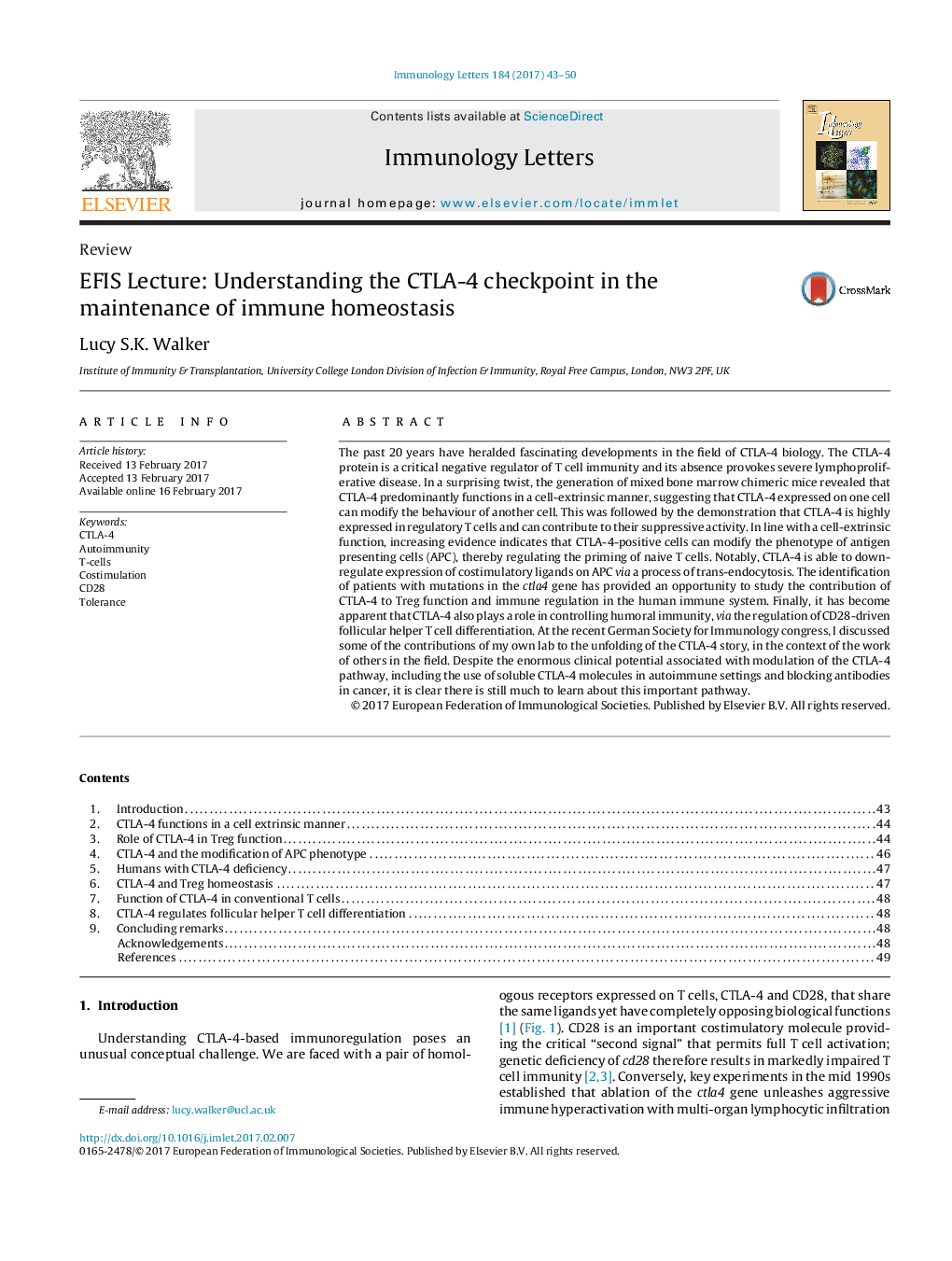| کد مقاله | کد نشریه | سال انتشار | مقاله انگلیسی | نسخه تمام متن |
|---|---|---|---|---|
| 5666682 | 1591542 | 2017 | 8 صفحه PDF | دانلود رایگان |

- CTLA-4 is a critical negative regulator of the T cell immune responses.
- CTLA-4 can function in a cell-extrinsic manner.
- CTLA-4 is required for regulatory T cell function in certain settings.
- CTLA-4 can downregulate its ligands by a process of trans-endocytosis.
- By controlling follicular helper T cell differentiation, CTLA-4 can regulate B-cell as well as T-cell responses.
The past 20 years have heralded fascinating developments in the field of CTLA-4 biology. The CTLA-4 protein is a critical negative regulator of T cell immunity and its absence provokes severe lymphoproliferative disease. In a surprising twist, the generation of mixed bone marrow chimeric mice revealed that CTLA-4 predominantly functions in a cell-extrinsic manner, suggesting that CTLA-4 expressed on one cell can modify the behaviour of another cell. This was followed by the demonstration that CTLA-4 is highly expressed in regulatory T cells and can contribute to their suppressive activity. In line with a cell-extrinsic function, increasing evidence indicates that CTLA-4-positive cells can modify the phenotype of antigen presenting cells (APC), thereby regulating the priming of naive T cells. Notably, CTLA-4 is able to downregulate expression of costimulatory ligands on APC via a process of trans-endocytosis. The identification of patients with mutations in the ctla4 gene has provided an opportunity to study the contribution of CTLA-4 to Treg function and immune regulation in the human immune system. Finally, it has become apparent that CTLA-4 also plays a role in controlling humoral immunity, via the regulation of CD28-driven follicular helper T cell differentiation. At the recent German Society for Immunology congress, I discussed some of the contributions of my own lab to the unfolding of the CTLA-4 story, in the context of the work of others in the field. Despite the enormous clinical potential associated with modulation of the CTLA-4 pathway, including the use of soluble CTLA-4 molecules in autoimmune settings and blocking antibodies in cancer, it is clear there is still much to learn about this important pathway.
Journal: Immunology Letters - Volume 184, April 2017, Pages 43-50